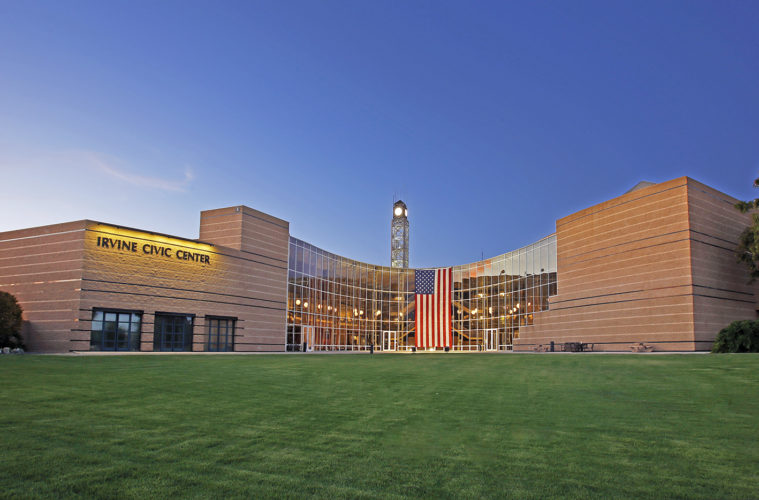On Tuesday, July 26, the Irvine City Council took steps to analyze the city’s ability to regulate its air quality more stringently than the South Coast Air Quality Management District. The item adds another layer to the city’s ongoing litigation in its mission to condemn the All American Asphalt facility.
While the council ultimately voted 3-2 not to adopt specific city-wide air quality standards, the topic spotlighted the continuous complaints regarding noxious odors and the potentially unsafe levels of volatile organic compounds being emitted from the All American Asphalt facility in North Irvine.
In June, the council asked the Irvine city staff to research if the city had the regulatory authority to enact stricter air quality standards in addition to AQMD. During the meeting, Irvine City Attorney Jeff Melching explained that while AQMD is the primary state and federal regulating source for air quality standards, there is an interesting exception in the code regarding stricter implementation within cities regulated by South Coast Air Quality Management.
“There’s an exception that applies to the South Coast AQMD — it doesn’t appear to apply to the other AQMDs across the state – it allows cities to adopt an ordinance that is stricter than the rules and regulations adopted by the SCAQMD and not in conflict therewith,” he said. “It requires that if the city was to adopt such a regulation that the SC district could enforce any such ordinance.”
This regulatory tool has been put into practice once, according to Melching, who explained the city of Santa Monica enacted an ordinance of this type in 1996.
“It’s really different from what we’ve been talking about with All American Asphalt. What Santa Monica did was effectively come up with a car trip reduction program,” he said. “Here, we’re talking about regulating pollutant levels.”
In terms of pollutant emissions, the Irvine community of Orchard Hills has worried and voiced public concern about the negative health effects associated with the potentially carcinogenic compounds that are produced by the facility’s asphalt production.
Known as VOCs (volatile organic compounds), the All American Asphalt crumb rubber production facility is one of the county’s biggest producers of compounds like benzene, formaldehyde and chromium, a byproduct of metal coating.
In fact, the amount of benzene the All American Asphalt facility produces increased between 2020 and 2021, according to AQMD emission reports.
In 2020, AAA produced approximately 221 pounds of benzene and 1,781 pounds of formaldehyde. In 2021, the AAA facility produced approximately 386 pounds of benzene and approximately 491 pounds of formaldehyde.
While the amount of some VOCs decreased on emission reports associated with AAA, Irvine Councilmember Larry Agran said there is still much more than needs to be done in order to protect the community.
Agran, who voted in favor of more stringent air quality standards, said the amount of VOCs being produced by AAA is “staggering.” Agran pointed out that AAA was the highest producer of benzene in the city at more than 221 pounds annually.
“If we were to establish a standard — you mentioned benzene — the sheer volume is measured in pounds of benzene emitted into the air in aerosol form over the year – it’s staggering. Benzene is a known carcinogen and so designated by the state of California,” he said. “The next highest emitter of benzene in Irvine was B Braun [Medical] — and they emitted 10 pounds of benzene [in 2021].”
Agran suggested that standards could be set not to allow benzene and other emissions at levels higher than the second highest producer in the city.
“In other words, in the case of AAA, you may continue to emit benzene, but not more than 10 pounds in the course of a year, putting you on par with the second highest emitter,” Agran said. “If we started with those that are clearly identified as carcinogens by the state of California and those that involve heavy volumes of emissions.”
Irvine Mayor Khan seconded a motion that would bring the discussion back to the council in September, however, the motion did not pass the majority vote.
Advertising disclosure: We may receive compensation for some of the links in our stories. Thank you for supporting Irvine Weekly and our advertisers.

